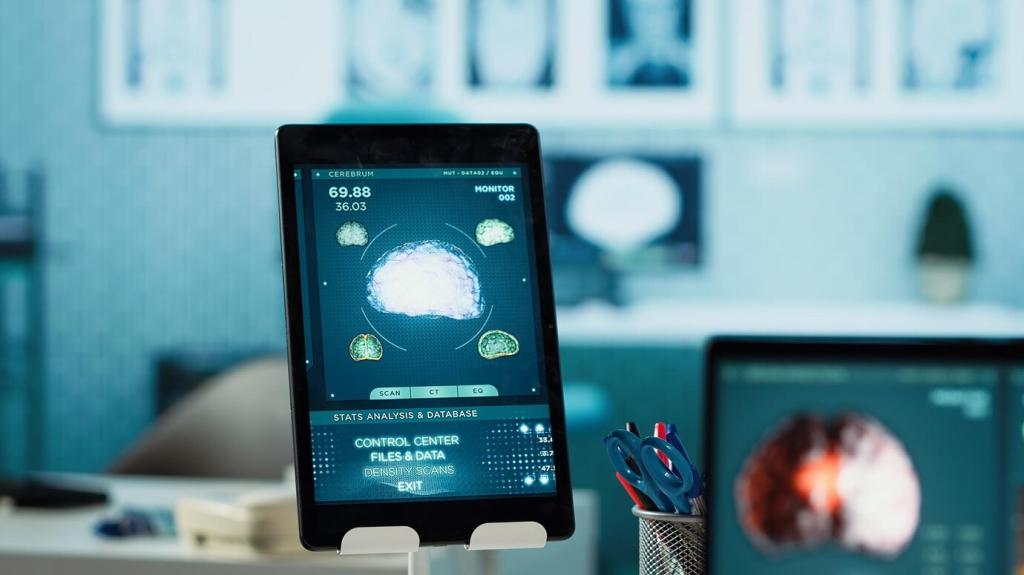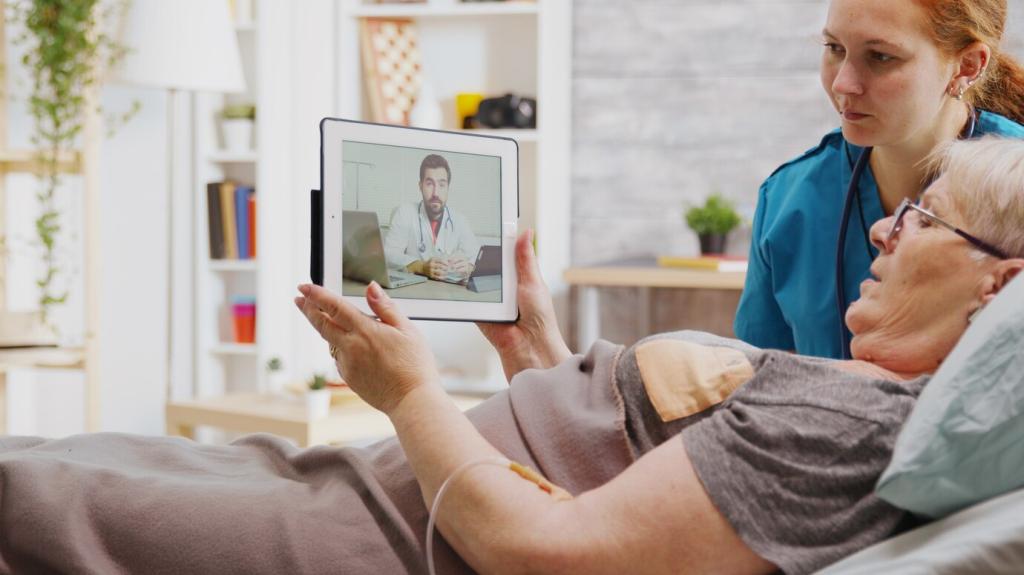A Home That Remembers: Integrated AI for Dementia Care in Smart Homes
Chosen theme: Integrated AI for Dementia Care in Smart Homes. Explore how connected sensors, compassionate algorithms, and human-centered design gently support memory, safety, and independence. Share your experiences in the comments and subscribe for weekly, practical insights that truly help.

What Integrated AI Means for Dementia Care at Home
Instead of isolated alerts, integrated AI blends motion, door, bed, and appliance data to recognize meaningful patterns like skipped meals or disrupted sleep. Comment with the sensors you trust most and why they made the biggest difference.

Routines That Reduce Friction and Restore Flow
Adaptive medication support without nagging
If a dose is missed, lights glow softly near the pill dispenser, and a familiar voice offers a brief reminder. If taken, the system quiets. Tell us which reminder styles feel respectful, and we’ll share customizable templates.
Meals, hydration, and energy for the day
Kitchen sensors notice when the fridge or kettle hasn’t been used by lunchtime and suggest a favorite snack. Care teams see gentle summaries, not constant alerts. Share your go-to meal cues and we’ll feature them next week.
Sleep routines that soothe, not startle
Evening routines dim hallway lights, warm color temperatures, and reduce notifications. If restlessness appears, calming audio plays briefly. Subscribe for a deep dive into sleep-friendly lighting scenes tailored for sundowning patterns.

If an exit door opens at night, pathway lights guide toward the bathroom, and a familiar voice suggests water or rest. Caregivers receive a context-rich alert. Comment with your preferred nighttime strategies for peace of mind.

Privacy-preserving radar or floor vibration sensors can detect falls without cameras. If risk spikes, the system checks in and offers step-by-step guidance. Subscribe for our roundup of camera-free options and installation tips.

Stove sensors, auto-shutoff plugs, and usage patterns help prevent hazards while preserving independence. Alerts escalate only when needed. Share your best safety automations so we can compile a community-tested checklist.
Connection and Identity Through Meaningful Moments
Voice assistants use preferred names, routines, and gentle phrasing. Short prompts reduce confusion; encouragement celebrates small wins. Tell us which voice tones or phrases feel most comforting in your home, and we’ll share examples.
Photo frames and TVs display curated images tied to time and season: wedding photos in June, favorite travels on Sundays. Caregivers can add new albums remotely. Subscribe for our guide to story-driven playlists and photo curation.
Scheduled calls, drop-in messages, and shared calendars make connection easy. The system suggests low-effort interactions when energy is low. Comment with your favorite lightweight ways to stay close across busy weeks.

Caregivers, Seen and Supported
Instead of data overload, caregivers see trends: sleep quality, meal consistency, mobility, and mood cues. Simple color signals show when routines hold. Share what you need most from a dashboard, and we’ll prototype layouts together.
Caregivers, Seen and Supported
Start with a gentle nudge. If risk persists, notify family, then a care circle, then professionals. Each step includes context, not noise. Subscribe to receive our escalation playbooks for different household scenarios.
Caregivers, Seen and Supported
Friends and neighbors can opt into specific tasks—grocery runs, walks, check-ins. The system coordinates schedules and sends thank-you notes. Comment with your care-circle wins so we can inspire others to try the model.


Ethics, Trust, and the Right to Choose
Use local processing when possible, minimize data, and encrypt everywhere. Offer camera-free options by default. Tell us your privacy must-haves, and we’ll publish a buyer’s checklist you can take to vendors.
Ethics, Trust, and the Right to Choose
When the system suggests a prompt, it should say why—missed breakfast, unusual pacing, or poor sleep. Clarity builds trust. Subscribe for our glossary translating technical concepts into plain, caregiver-friendly language.
Your First Week with an Integrated AI Smart Home
Start with one meaningful routine
Pick a friction point—meds at breakfast, hydration after lunch, or nighttime navigation. Set two clear cues and measure results. Share your first target routine and we’ll send tailored setup tips in our next newsletter.
Choose interoperable, future-proof tools
Favor devices that play well together and export data responsibly. Keep a simple inventory as you add sensors. Subscribe for our vetted starter kits suited to apartments, townhomes, and multi-generational houses.
Build a care partnership around the tech
Invite your loved one, family, and clinicians to co-create routines. Document preferences and red lines up front. Comment with one boundary you won’t compromise on, and we’ll highlight ways to honor it with automation.
